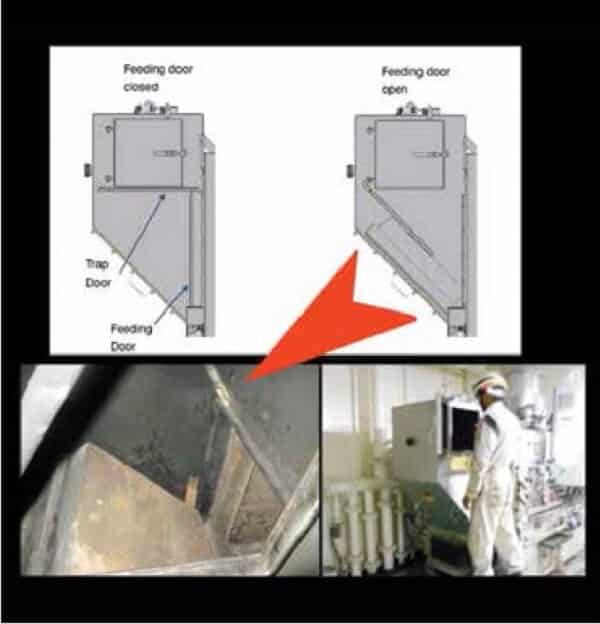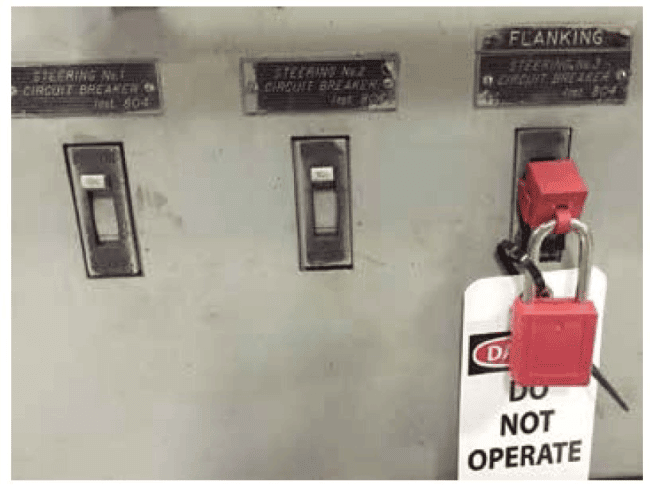Real Life Accident: Incinerator Safety Devices Bypassed, 4th Engineer Loses Forearm
The vessel was underway when the incinerator alarm sounded, indicating the inside sluice gate was open. The incinerator was stopped and allowed to cool. A few hours later, the 4th engineer went to the incinerator room to investigate.
Standing on a small step, he opened the garbage loading door and also the sluice gate. (The incinerator feed system is such that when one door is open, the other must be closed and vice versa. Two different safety devices near the feed door ensure this operation; these must be overridden in order to look into the incinerator sluice chamber.) When the sluice gate was opened, he saw a piece of wood at the opposite end of the garbage loading door. While checking, he accidentally dropped his torch inside the incinerator door. While trying to recover the torch, the automatic sluice began to close and trapped his arm.

His arm firmly stuck, the 4th engineer tried to call for help but nobody heard him. After coffee, the 2nd engineer went to the incinerator room to see how the job was progressing and investigate why the 4th engineer was not at coffee. He found the 4th engineer trapped; he immediately released the victim and brought him to the ship’s hospital. Emergency notifications were initiated and treatment was given as per medical advice. The vessel deviated from its route but evacuation was delayed by foul weather and darkness. The next morning the vessel was brought alongside and the victim evacuated by land.
In the hospital, no fracture was apparent but a total obstruction of all blood vessels to the hand and forearm was confirmed. Surgery was performed immediately but to no avail and amputation of the forearm was unavoidable.
Lessons learned
- Never bypass the safety features of an installation and always follow the procedures.
- The amount of waste fed at any one time should be in quantities that do not tend to block the incinerator doors.
- Working alone in isolated areas has increased risks and should be the subject of a risk analysis.
- Apparently, objects blocking the incinerator doors was a fairly regular occurrence (once a month) on this ship. It is possible that this ‘common occurrence’ encouraged complacency and risky behaviour such as taking shortcuts and bypassing safety features on the equipment.
Reference: nautinst.org
Do you have info to share with us ? Suggest a correction
- Real Life Incident: Vessel Collision in Good Visibility
- Real Life Incident: Severe Injury To Deck Crew While Leaving Berth
- Real Life Incident: Departure Damage in Very Restricted Waterway
- Real Life Incident: Low Situational Awareness Has High Impact Consequence
- Real Life Incident: Fouled Anchor in a Designated Anchorage
- Real Life Incident: Fire On Barge Carrying Scrap Metal Causes $7 Million Worth Of Damage
Latest Case studies Articles You Would Like:
Subscribe To Our Newsletters
By subscribing, you agree to our Privacy Policy and may receive occasional deal communications; you can unsubscribe anytime.
Web Stories





















They are lucky enough to get the 4th eng. anyway.